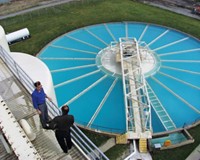Advertisement
Grab your lab coat. Let's get started
Welcome!
Welcome!
Create an account below to get 6 C&EN articles per month, receive newsletters and more - all free.
It seems this is your first time logging in online. Please enter the following information to continue.
As an ACS member you automatically get access to this site. All we need is few more details to create your reading experience.
Not you? Sign in with a different account.
Not you? Sign in with a different account.
ERROR 1
ERROR 1
ERROR 2
ERROR 2
ERROR 2
ERROR 2
ERROR 2
Password and Confirm password must match.
If you have an ACS member number, please enter it here so we can link this account to your membership. (optional)
ERROR 2
ACS values your privacy. By submitting your information, you are gaining access to C&EN and subscribing to our weekly newsletter. We use the information you provide to make your reading experience better, and we will never sell your data to third party members.
Environment
Strontium In Water May Get Regulated
by Jessica Morrison
October 27, 2014
| A version of this story appeared in
Volume 92, Issue 43

EPA could regulate strontium as a contaminant in the nation’s drinking water, the agency said in a preliminary decision issued earlier this month. The element is detectable in 99% of drinking water in the U.S., and it is present at “levels of concern” in 7% of public water systems, the agency reports. At elevated levels, Sr can replace calcium in bones, adversely affecting skeletal health. Infants, children, and adolescents take the hardest hit from a deficiency of calcium in bones. EPA made the preliminary decision about Sr under the Safe Drinking Water Act. That law requires the agency every five years to assess certain unregulated contaminants in drinking water for possible controls. Also in its recent action, the agency elected not to regulate four other drinking water contaminants: 1,3-dinitrobenzene, two organophosphate insecticides—dimethoate and terbufos—and a breakdown product of the latter, terbufos sulfone. In these determinations, EPA considers adverse health effects from exposure to the contaminant, the extent to which a contaminant occurs in drinking water, and whether regulation would meaningfully reduce health risks. The agency expects to make a final determination in 2015.





Join the conversation
Contact the reporter
Submit a Letter to the Editor for publication
Engage with us on Twitter